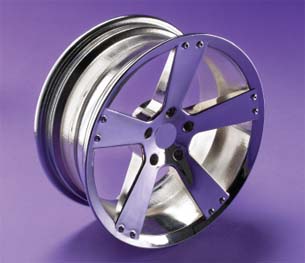What’s Ahead for 3D Printing?
Custom manufacturing goes mainstream as prices fall and material types increase.
December 1, 2010
By Jon Cobb
Editor’s note: This commentary was sponsored as part of DE’s Visionary Voices section in the magazine’s15th anniversary issue.
 |
Like many successful technology products, 3D printers will become smaller, faster, less expensive and easier to use in the next five to 10 years. They will also be able to produce parts with a wider variety of materials. These drivers, in addition to simplified user interfaces from the CAD software, will increase acceptance of 3D printers and alter the way they are used.
Future Engineers
Today’s students will become the users of tomorrow. Students in universities, high schools, middle schools and even elementary schools are being introduced to additive manufacturing. In Edina, MN, for example, eighth-grade students used the Dimension uPrint Personal 3D Printer in a project to model their design ideas for a new automobile cup holder. Cost, ease of use, and part durability were important to the teacher, who said the project generated tremendous enthusiasm from students and their parents.
Students will take their design and prototyping skills from school to the workforce, where 3D printers will be found in the engineering offices of manufacturing and architectural firms. Two types of products will emerge for these applications. Shared devices for three to 10 people will support higher demand, while individual printers will provide the personal use we see today with 2D printers. In the architectural and construction market, which is still largely untapped, we will see greater use of 3D printers for design and development, from initial concept models to detailed models for making final decisions on designs.
Custom Manufacturing
In the manufacturing world, 3D printing will continue to grow, as it can be used to produce custom-manufactured assembly tools quicker and more cost efficiently than traditional means. This trend will be bolstered by an increase in the plastic and metal materials that will become available for 3D printers.
We also will see an increase in additive manufacturing for end-use parts. Like the production of assembly tools, the use of 3D printers to make short run production parts is another growing trend. A significant percentage of manufacturers don’t produce runs of millions or even hundreds of thousands. For those performing production runs of 5,000 parts or fewer, 3D printing is a viable process. I believe this trend will continue, along with the growing awareness of the benefits.
In the future, it will become more common for companies to employ large quantities of 3D printers for mass customization—making large quantities of products, each with features unique to a customer’s need. These companies will delight customers with technology that builds single parts economically. As the price of 3D printers decreases and more people become comfortable with custom manufacturing, we will see more use in small- to medium-volume runs geared toward consumer markets. Even hobbyists and gamers will discover the benefits of 3D printing. Here, the availability of new software also will drive increased hardware usage.
We continue to drive the price down and deliver products that mimic how 2D printers operate. And we will do this while maintaining high quality standards for commercial applications.
Our relationship with HP will help us expand acceptance in the future. I believe HP’s unmatched sales and distribution capabilities and Stratasys FDM technology are the right combination to achieve broader 3D printer usage worldwide.
The return on investment for organizations that purchase 3D printers is sound. Seeing is believing for users, and companies are amazed at how quickly they experience a payback on their investment. For many organizations, 3D printers are moving from “nice to have” to “mission critical.”
Jon Cobb is vice president of Global Marketing for Stratasys
Subscribe to our FREE magazine, FREE email newsletters or both!
About the Author
DE’s editors contribute news and new product announcements to Digital Engineering.
Press releases may be sent to them via [email protected].






